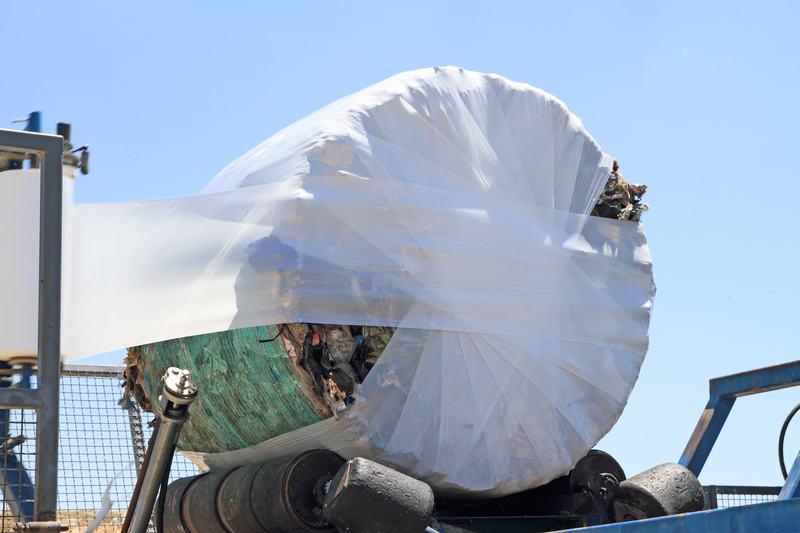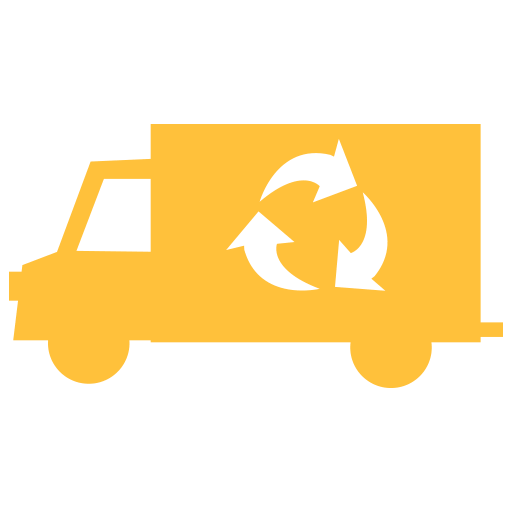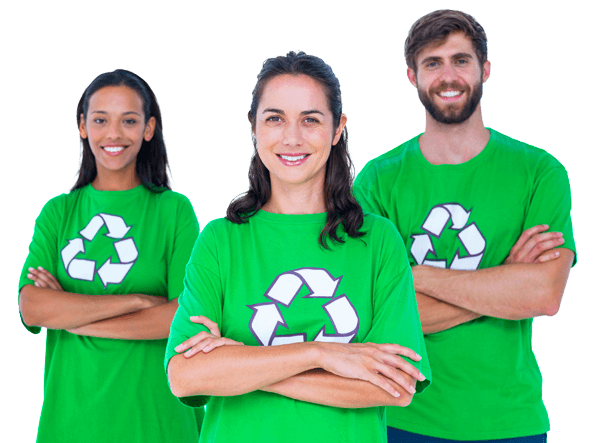What Makes Waste Hazardous: Indicators of Environmental and Health Risks
Posted on 23/06/2025
What Makes Waste Hazardous: Indicators of Environmental and Health Risks
Hazardous waste represents one of the most critical environmental challenges faced globally. The improper handling and management of such waste not only harm the environment but also pose serious health risks to humans, animals, and ecosystems. But what exactly makes certain waste hazardous? In this comprehensive guide, we will explore the indicators of environmental and health risks related to hazardous waste, the types of dangerous substances present, their potential impacts, and strategies for safe handling.
Defining Hazardous Waste
Hazardous waste refers to discarded materials that can be dangerous or harmful to human health and/or the environment. According to the Environmental Protection Agency (EPA), such waste possesses properties making it potentially toxic, reactive, ignitable, or corrosive. Identifying which wastes are dangerous is vital for preventing environmental damage and mitigating health-related issues.
Key Characteristics of Hazardous Waste
- Toxicity: The presence of poisonous substances that can cause harm if inhaled, ingested, or absorbed.
- Reactivity: Wastes that can unleash violent chemical reactions, sometimes explosively, when exposed to air, water, or other chemicals.
- Corrosivity: Materials that can destroy metals or living tissue due to their highly acidic or basic nature.
- Ignitability: Wastes that catch fire easily under certain conditions, presenting both environmental and safety hazards.
These four primary traits define what makes waste hazardous and set the stage for risk assessment regarding both environmental and health impacts.

Types of Hazardous Waste
The term 'hazardous waste' can refer to a range of substances arising from households, industries, agriculture, and healthcare activities. Being able to differentiate between types of hazardous waste is imperative for effective management and mitigation of associated risks.
Common Categories of Hazardous Waste
- Chemical Waste: Includes solvents, pesticides, heavy metals, and cleaning agents commonly found in industrial and laboratory settings.
- Biomedical Waste: Comprises used syringes, bandages, human tissue, pharmaceuticals, and other materials arising from healthcare facilities.
- Electronic Waste (E-waste): Discarded electronic gadgets and appliances containing harmful components like lead, mercury, and cadmium.
- Industrial Waste: Byproducts of manufacturing processes including dyes, paints, and contaminated sludges.
- Radioactive Waste: Materials emitting ionizing radiation, often coming from nuclear reactors, medical equipment, or research institutions.
Each type presents unique environmental and health hazards, depending on its chemical composition, volume, and means of disposal.
Indicators of Environmental Risks from Hazardous Waste
Understanding the signals that hazardous waste may threaten the environment is essential. Below, we look at key environmental risk indicators:
1. Leaching of Dangerous Chemicals
One of the main environmental dangers is the migration (leaching) of hazardous substances into soil and groundwater. Substances such as heavy metals, persistent organic pollutants, or solvents can seep into water tables, rendering water unsafe for drinking or irrigation and damaging aquatic ecosystems.
2. Bioaccumulation and Biomagnification
Some hazardous substances, like mercury and polychlorinated biphenyls (PCBs), do not break down easily in nature. They accumulate in the tissues of living organisms, especially in the food chain. The higher up a food chain, the greater the concentration of these hazardous chemicals--a phenomenon termed biomagnification.
3. Air Pollution
Improper incineration or disposal of hazardous waste can release toxic fumes, particulates, or gases--such as dioxins, furans, or volatile organic compounds--into the atmosphere, contributing to air pollution and respiratory ailments.
4. Soil Contamination
Waste dumped in landfills or open grounds can permanently alter soil chemistry, disrupt microbial communities, reduce soil fertility, and make land unsuitable for agriculture or habitation.
5. Ecosystem Disruption
When hazardous waste contaminates once-pristine environments, local flora and fauna can be seriously threatened. Species may be killed outright or suffer reproductive failures and genetic mutations.
Health Risk Indicators Associated with Hazardous Waste
Human health can be profoundly affected by exposure to hazardous waste. The symptoms and impacts may vary from minor irritations to chronic diseases and even death. Below are the significant indicators of health risks:
1. Direct Contact
Touching, inhaling, or ingesting hazardous waste can cause immediate effects, such as skin burns, eye irritation, or respiratory distress. For example, acidic and alkaline substances cause severe burns and tissue damage on contact.
2. Chronic Exposure
Long-term, low-level exposure to hazardous substances--including lead, asbestos, or pesticides--may lead to chronic conditions like cancer, organ failure, neurological disorders, and reproductive health issues.
3. Occupational Hazards
Waste workers, healthcare personnel, and industrial operators face a higher risk due to repeated or prolonged exposure to hazardous substances. Proper safety protocols and personal protective equipment (PPE) are crucial in such settings to mitigate health risks.
4. Accidental Release and Spill Incidents
Events such as industrial accidents, transport spills, or facility malfunctions can unleash large volumes of hazardous waste into the environment, causing acute health effects for local populations--sometimes on a catastrophic scale (e.g., Bhopal disaster).
5. Endocrine Disruption and Developmental Damage
Some hazardous chemicals (like phthalates and dioxins) act as endocrine disruptors, interfering with hormonal systems in humans and animals. This can lead to birth defects, developmental delays, and reproductive failures.
Hazardous Waste Properties and How They Determine Risks
Hazardous waste is characterized based on specific chemical and physical properties. Understanding these helps in identifying and controlling the associated environmental and health hazards.
- Toxicity: Indicates the degree to which a substance can damage living organisms. Examples include cyanide, arsenic, and certain pesticides.
- Flammability: Many solvents, oils, and fuels can ignite easily, causing fire hazards.
- Corrosivity: Highly acidic or alkaline materials (such as sulfuric acid or sodium hydroxide) pose risks of tissue damage and metal corrosion.
- Reactivity: Substances that can explode or generate toxic gases upon contact with air, water, or other substances, including peroxides and cyanides.
- Persistence: The inability of certain substances to degrade naturally, resulting in long-term pollution. Polychlorinated biphenyls and organochlorine pesticides are classic examples.
Common Sources Generating Hazardous Waste
Hazardous waste can originate from multiple sources. Identifying the source helps control and manage risks more effectively. Here are the most significant generators:
- Industries: Chemical manufacturing, electroplating, petroleum refining, and textile production.
- Healthcare Facilities: Hospitals, laboratories, veterinary clinics producing biomedical and chemical wastes.
- Households: Used batteries, electronic devices, cleaning chemicals, paints, and pesticides.
- Agricultural Activities: Pesticide containers, unused chemicals, and spoiled agricultural products.
- Construction and Demolition: Debris containing asbestos, lead-based paint, or mercury switches.
How Hazardous Waste Is Identified and Classified
Organizations use scientific methods to identify hazardous waste and its risk level. This classification makes use of:
Regulatory Frameworks
- Resource Conservation and Recovery Act (RCRA) (USA): Establishes standards for identifying and managing hazardous waste.
- Basel Convention: International treaty managing transboundary movements of hazardous waste.
- European Waste Catalogue (EWC): A coding system classifying hazardous waste types in Europe.
Testing and Monitoring
- Leaching Tests: Assess whether waste will release hazardous components when in contact with water.
- Toxicity Characteristic Leaching Procedure (TCLP): Evaluates the potential for leaching toxic materials.
- Ignitability, Corrosivity, and Reactivity Tests: Laboratory assays determining how waste reacts under certain conditions.
Consequences of Improper Disposal of Hazardous Waste
Poor waste management practices can lead to disastrous consequences:
- Water contamination leading to unsafe drinking water, loss of biodiversity, and damage to recreational/fishing sites.
- Soil infertility and land degradation, hampering agriculture and human habitation.
- Outbreak of diseases and elevated cancer rates, especially in communities near disposal sites.
- Atmospheric pollution with acid rain, smog formation, or accumulation of greenhouse gases.
- Long-term ecosystem collapse, making certain areas uninhabitable for generations.
Best Practices for Managing Hazardous Waste
To minimize environmental and health risks, comprehensive management is key. Recommended measures include:
- Segregation at Source: Separate hazardous waste from regular waste to prevent cross-contamination and facilitate safe disposal.
- Proper Labeling and Containment: Use standardized containers with hazard symbols and clear labels.
- Safe Transportation: Follow regulations for moving hazardous waste, employing approved vehicles and routes.
- Treatment and Disposal: Use appropriate technologies, such as incineration, neutralization, encapsulation, or deep-well injection.
- Regular Monitoring and Audits: Install environmental monitoring systems at disposal sites and conduct periodic risk assessments.
- Public Education and Training: Inform communities and workers about safe handling, emergency measures, and reporting of hazardous waste incidents.
Innovations and Trends in Hazardous Waste Management
Rapid advances in science and technology offer new tools to keep hazardous waste and its risks under control. Emerging trends include:
- Green Chemistry: Designing safer chemicals and materials to reduce the generation of hazardous byproducts.
- Waste-to-Energy Technologies: Transforming hazardous waste into usable heat or electricity through advanced incineration or gasification.
- Bioremediation: Using plants, fungi, or microbes to break down toxic substances at contaminated sites.
- Digital Tracking: Electronic manifests, GPS tracking, and AI-driven audits for better waste traceability.

Global Policies and the Future of Hazardous Waste Management
Addressing the environmental and health challenges posed by hazardous waste **requires coordinated global action**. Key international organizations, like the United Nations Environment Programme (UNEP), are driving efforts towards stronger regulation, better waste tracking, and tighter international controls. New treaties and regulations are continually being developed to address emerging risks, such as those from electronic and medical waste.
Conclusion: Understanding and Recognizing Indicators of Hazardous Waste Risks
The answer to what makes waste hazardous lies in its chemical and physical properties, as well as its impact on living organisms and the environment. By recognizing indicators of environmental and health risks and adhering to globally recognized management standards, we can significantly reduce dangers posed by hazardous waste. Sustainable practices, ongoing research, and public awareness remain essential tools for protecting our planet and future generations from the threats of hazardous waste.
For more updates, guidelines, and actionable insights on hazardous waste management, stay tuned to this space and join the global movement for a cleaner and safer environment.

 020 3875 4096
020 3875 4096 020 3875 4096
020 3875 4096




 House clearance
House clearance Rubbish collection
Rubbish collection London Rubbish Clearance is one of the most popular companies for
London Rubbish Clearance is one of the most popular companies for  Our company in London is all you need for professional rubbish collection! London Rubbish Clearance has lots of experience when it...
Our company in London is all you need for professional rubbish collection! London Rubbish Clearance has lots of experience when it...




